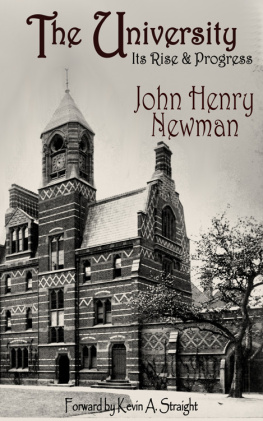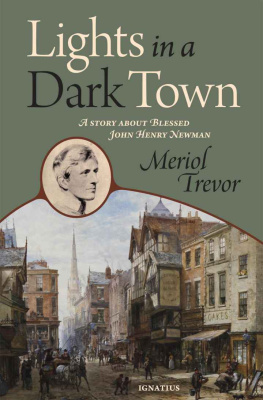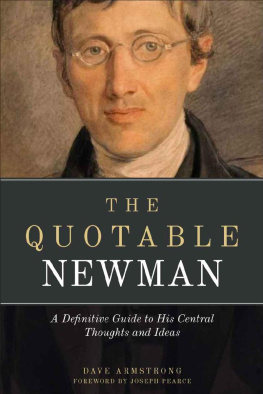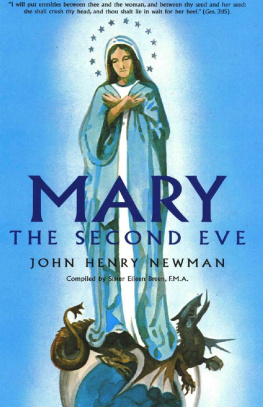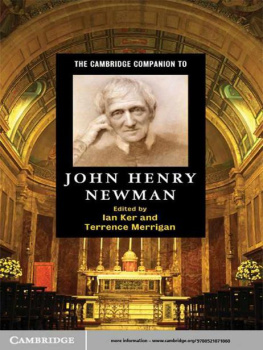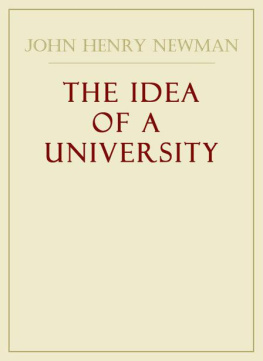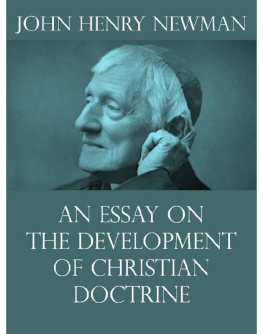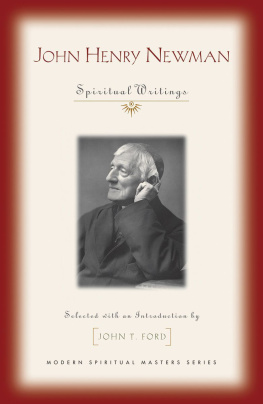LOSS AND GAIN
JOHN HENRY NEWMAN
LOSS AND GAIN:
THE STORY
OF A CONVERT
With an Introduction and
Contemporary Criticism
Edited by TREVOR LIPSCOMBE
Ignatius Critical Editions Editor
JOSEPH PEARCE
IGNATIUS PRESS SAN FRANCISCO
Cover: View of Oxford, England
Photograph Fr. Lawrence Lew, O.P.
Cover design by John Herreid
2012 by Ignatius Press, San Francisco
All rights reserved
ISBN 978-1-58617-705-8 (PB)
ISBN 978-1-68149-312-1 (EB)
Library of Congress Control Number 2011940928
Printed in India
Tradition is the extension of Democracy through time; it is the proxy of the dead and the enfranchisement of the unborn.
Tradition may be defined as the extension of the franchise. Tradition means giving votes to the most obscure of all classes, our ancestors. It is the democracy of the dead. Tradition refuses to submit to the small and arrogant oligarchy of those who merely happen to be walking about. All democrats object to men being disqualified by the accident of birth; tradition objects to their being disqualified by the accident of death. Democracy tells us not to neglect a good mans opinion, even if he is our groom; tradition asks us not to neglect a good mans opinion, even if he is our father. I, at any rate, cannot separate the two ideas of democracy and tradition .
G.K. Chesterton
Ignatius Critical EditionsTradition-Oriented Criticism for a new generation
CONTENTS
Introduction
Trevor Lipscombe
Beyond Autobiography: Loss and Gain as Theological Satire
David Paul Deavel
Truth as Convergence and as Conviction in Loss and Gain
Mitchell Kalpakgian
Reading for a Conversion: On the University in Loss and Gain
Geoffrey M. Vaughan
Oxford Lost, Rome Gained, Brideshead Previsited
J. C. Whitehouse
INTRODUCTION
Trevor Lipscombe
John Henry Newman possessed one of the finest minds England has ever produced. His keen intellectmade plain by his sermons, pamphlets, and booksdominated the religious landscape of Victorian England. His character, too, was without reproach. His conversion to Catholicism shocked many of his fellow Britons, but the Times of London took consolation in the fact that [a]s a nation and a race we now boast to have contributed to Rome one of her greatest minds and one of her best men. In a very real sense, the Church of England became what Newman imagined it could be. In its turn, the Catholic Church, through its Second Vatican Council, embodied many of Newmans arguments in favor of greater involvement of the laity in the life of the Church.
Newman was an Oxford student, became a fellow of Oriel College, and went on to become the vicar of the University Church of St. Mary the Virgin in Oxford. It was in Oxford, then, that Newman was trained and where his reading brought him ever closer to the Catholic Church. It is in Oxford that Loss and Gain: The Story of a Convert is set, a novel that is rich in history and theology. To appreciate the story fully, some understanding of the universitys long interaction with religion and the Crown is of benefit.
At the heart of the city of Oxford, where the High Street runs into St. Giles, stands the Martyrs Memorial. Overlooked by the hordes of camera-wielding tourists, the obelisk marks one of the most brutal events in Oxfords long history: the burning, in October 1555, of the Anglican bishops of Worcester and London, Hugh Latimer and Nicholas Ridley. Contemporary accounts report Latimer encouraging his companion with the words Play the man, Master Ridley and assuring him, with a touch of gallows humor, that we shall this day light such a candle, by Gods grace, in England, as I trust shall never be put out. Latimers words were prophetic. A shade over three years later, the Catholic Queen Mary lay dead and, upon the ascension of her half sister, Queen Elizabeth I, to the throne, England returned to the Protestant fold.
Bloody Mary and Good Queen Bess, as their nicknames suggest, have been favored differently by history. Certainly the early years of Elizabeths reign were marked by a modicum of religious tolerance or, perhaps better, benign neglect. The priests imported by Mary or trained during her reign would soon die out and, with no new priests to replace them, Catholicism in England would wither. The Counter-Reformation changed this equation. The Jesuit mission to England began, where priests and brothers trained abroad came home and ministered to the Catholic faithful, playing a deadly game of hide-and-seek until, inevitably, they were captured. The best known of these daring, if quixotic, Jesuits was the Oxford scholar and convert Edmond Campion. His letter Challenge to the Privy Council, called by his enemies Campions Brag, was a gauntlet thrown down that Elizabeth dare not ignore, for it spoke of a league of all the Jesuits in the world who would cheerfully be racked with your torments or consumed by your prisons. After his seizure by priest hunters outside of Wantage, Campion was paraded through many of the most important towns on the way to Londonwhich included Oxford. Bound by ropes, facing backwards on a horse, bearing the sign Campion, the seditious Jesuit, he served as a chilling warning to the members of Oxford University what could happen to those who engage in religious dissentjust as Latimer and Ridley had done a quarter of a century earlier. Before the year was out, Campion was handed over to the butchers at Tyburn, where he was hanged, drawn, and quartered at the place where Marble Arch now stands. Oxford, in terms of religion, was not a melting pot, but a crucible in which faith was forged.
Toward the end of Elizabeths reign, when the country felt safer from Catholic revolt and invasion from abroad, policies changed. Those who did not attend the services of the Church of England were obliged to pay stiff fines, and the state coffers swelled when wealthy Catholics contributed to them. A dont ask, dont tell strategy evolved, leaving Catholics alone to pay the fines that enriched the stateat least until a new Catholic plot, real or imagined, took hold of the nation. Of these, there were many. The overall strategy, though, gave English Catholicism a particular flavor. Priests resided in the country estates of landed Catholic gentry and, in such a structured society, the Catholic gentry exercised much influence over the local church. This, combined with the difficulty of direct communication with Rome, led to an independent spirit among Catholics in England and these Old Catholicsthose who endured in times of persecution and paid the fines during better timesfelt alienated when the Catholic Church was formally permitted to exist once again in Britain and power and influence was ceded to the bishops.
The sea of faith remained troubled in the eighteenth century. This time, the Church of England was challenged not by external forces but from the flames of dissent within. John Wesley, his brother Charles, and George Whitfield cofounded the Holy Club while they were students at Oxford. Perturbed by the laxity, or apathy, of the Church of England, they sought to bring about a renewal of Christianity throughout the realm. Like-minded Christians gathered to hear the fiery, open-air sermons of John Wesley and sing the stirring hymns composed by Charles. They attracted crowds numbering five thousand to ten thousand. Members of this renewal movement studied the Bible together, visited the sick, brought alms to the poor, and spoke often of the Holy Spirit moving in their lives. Following this method, by which they became known as Methodists, England was evangelized. Whitfield crossed the Atlantic, as did John Wesley, and the First Great Awakening happened in the newly formed United States. Benjamin Franklin, for one, went to hear Whitfield preach. In Britain, the movement gained great hold in the industrial north, as well as in the Principality of Wales. The Methodist movement caused uneasiness for some of the Anglican bishops; the use of lay preachers, for example, threatened the episcopal structure of the Anglican Church. Eventually, the Dissenters, as they became known, ceased to attend the services of the Church of England.
Next page
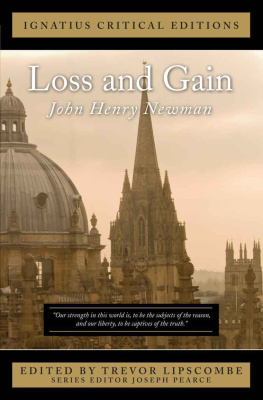
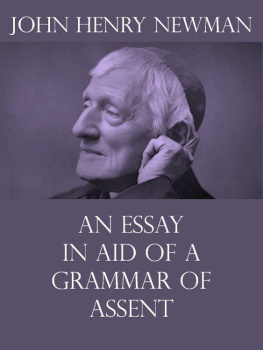
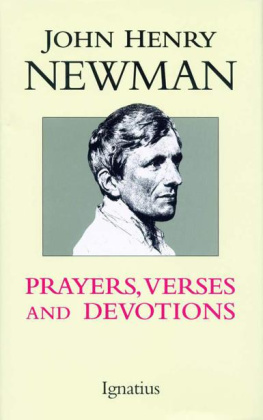
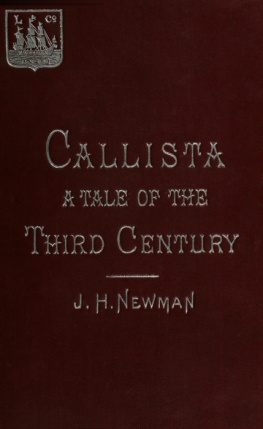
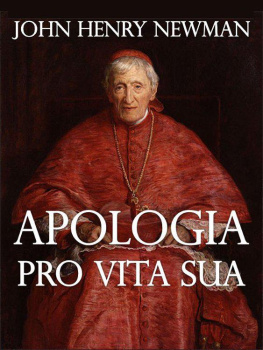
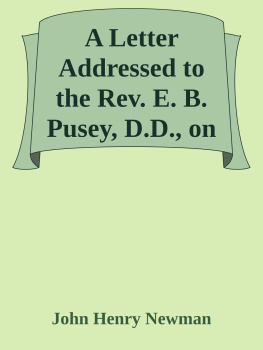
![Blessed John Henry Newman - Blessed John Henry Newman Collection [26 Books]](/uploads/posts/book/371011/thumbs/blessed-john-henry-newman-blessed-john-henry.jpg)

